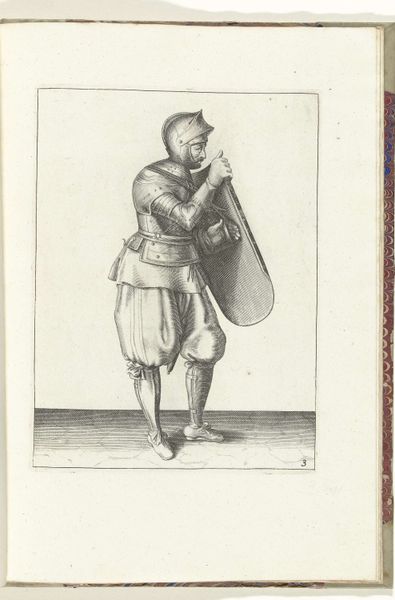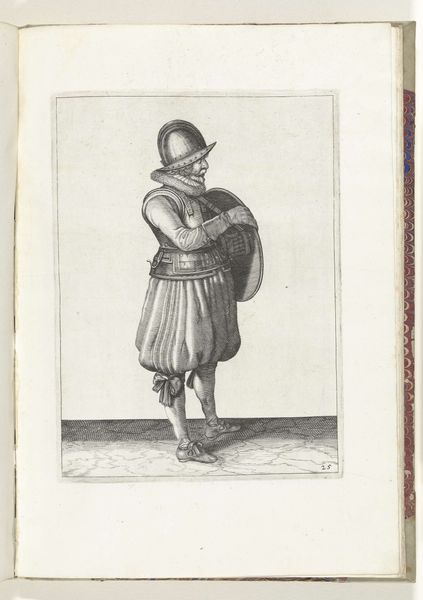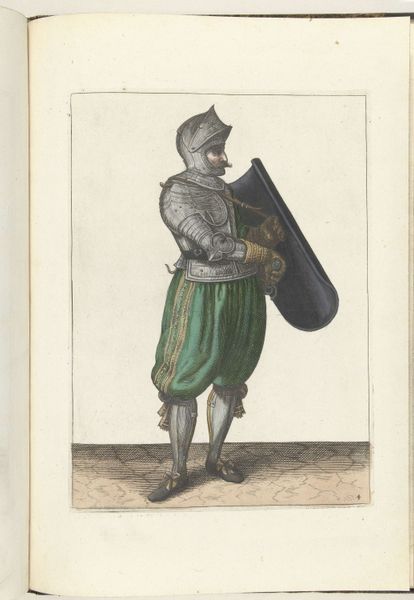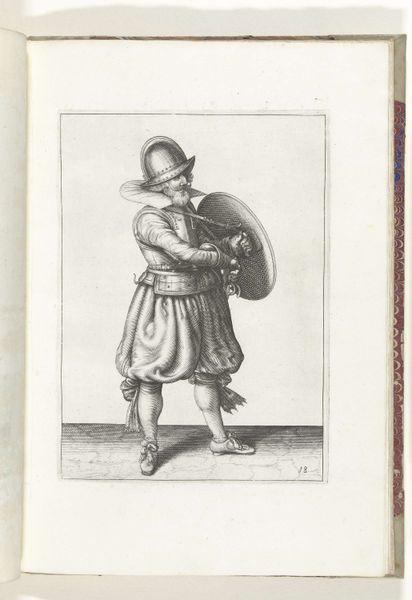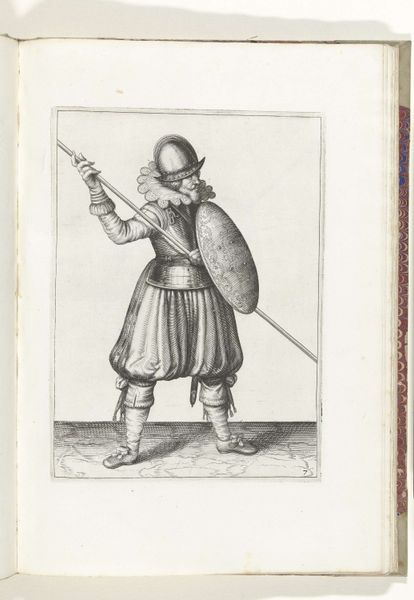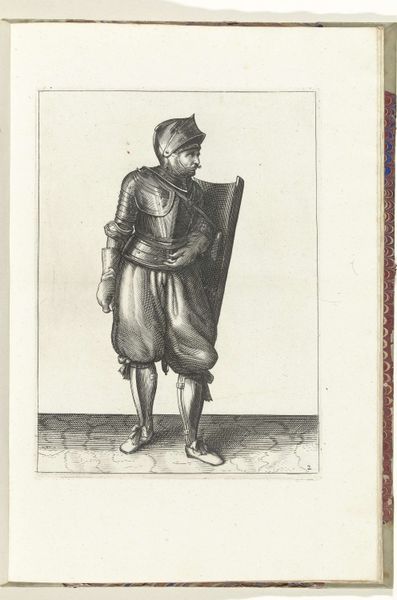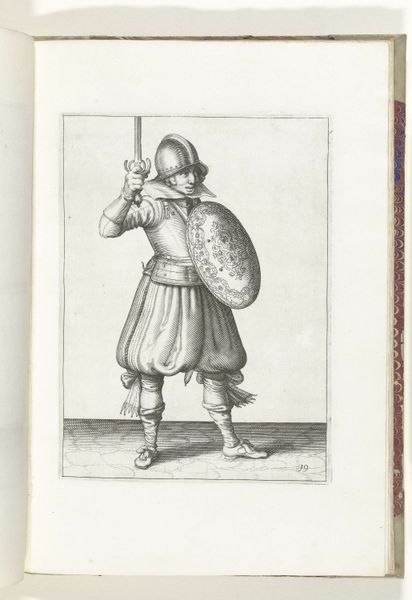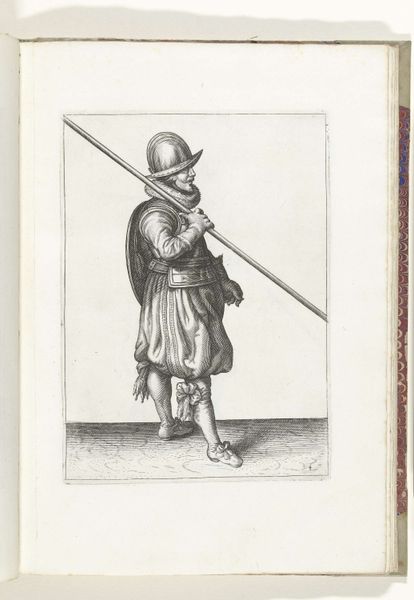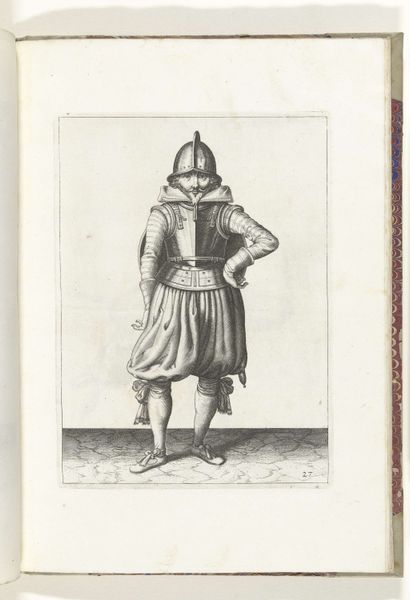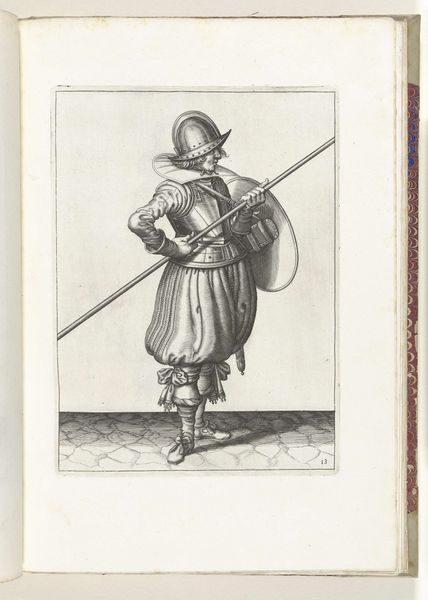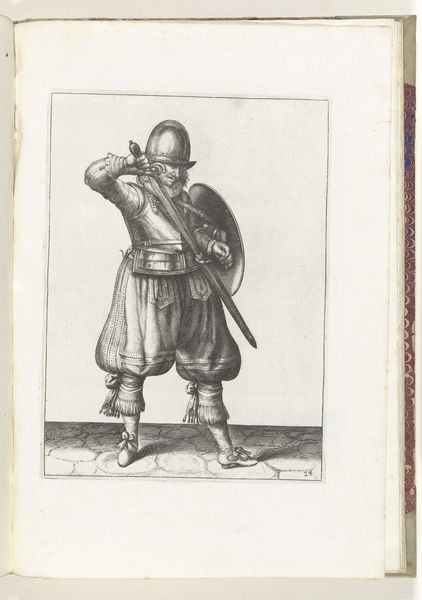
De exercitie met de targe en rapier: de soldaat houdt de targe iets naar voren om de rapier te kunnen trekken (nr. 4), 1618 1616 - 1618
0:00
0:00
print, metal, engraving
#
weapon
#
medieval
# print
#
metal
#
pencil sketch
#
figuration
#
sketchbook drawing
#
history-painting
#
engraving
Dimensions: height 255 mm, width 187 mm
Copyright: Rijks Museum: Open Domain
Editor: Here we have Adam van Breen's "De exercitie met de targe en rapier" from around 1618, an engraving showing a soldier with a shield and rapier. The detail is incredible! What strikes me is the man's stance; he seems ready for anything. How do you interpret this work? Curator: The print offers a lens into early 17th-century martial culture. It depicts not just a soldier, but a figure deeply embedded in the power dynamics of the time. Consider the 'targe' - the shield - and the rapier. These aren't merely weapons; they represent a very specific mode of combat, linked to status, gender, and even colonial expansion. How do you see his armor functioning in this social context? Editor: Well, it's clearly protective, but the elaborate design almost makes it a form of display, wouldn’t you agree? Like a visual declaration of power and wealth. Curator: Exactly! And who had access to this "protection," and for what purposes? This image participates in the visualization of early modern military might, which then gets mobilized – literally and figuratively – to enable a very specific type of governance. Note that these “military exercises” in turn contributed to codifying masculinities as a source of political power. Editor: That makes me think about how images like this might have been used as propaganda. Did this ideal of the armed soldier reinforce certain social hierarchies? Curator: Undoubtedly. Images circulated ideologies. And here, the display of martial skill normalizes violence and solidifies class divisions by restricting access to weapons and military training. It reinforces a certain image of masculinity that is tied to protection, domination and ultimately, control. Editor: So it’s less a simple portrait and more a complex statement about power? Curator: Precisely. By analyzing this print through the lenses of gender, class, and historical power structures, we reveal the potent narratives embedded within it. What do you take away from this analysis? Editor: I now see this as a historical artifact loaded with cultural and political meaning, much more than just a picture of a soldier. Curator: Indeed, this helps us think critically about not only the art of the past, but the ways visual representation still shapes our understanding of the present.
Comments
No comments
Be the first to comment and join the conversation on the ultimate creative platform.
